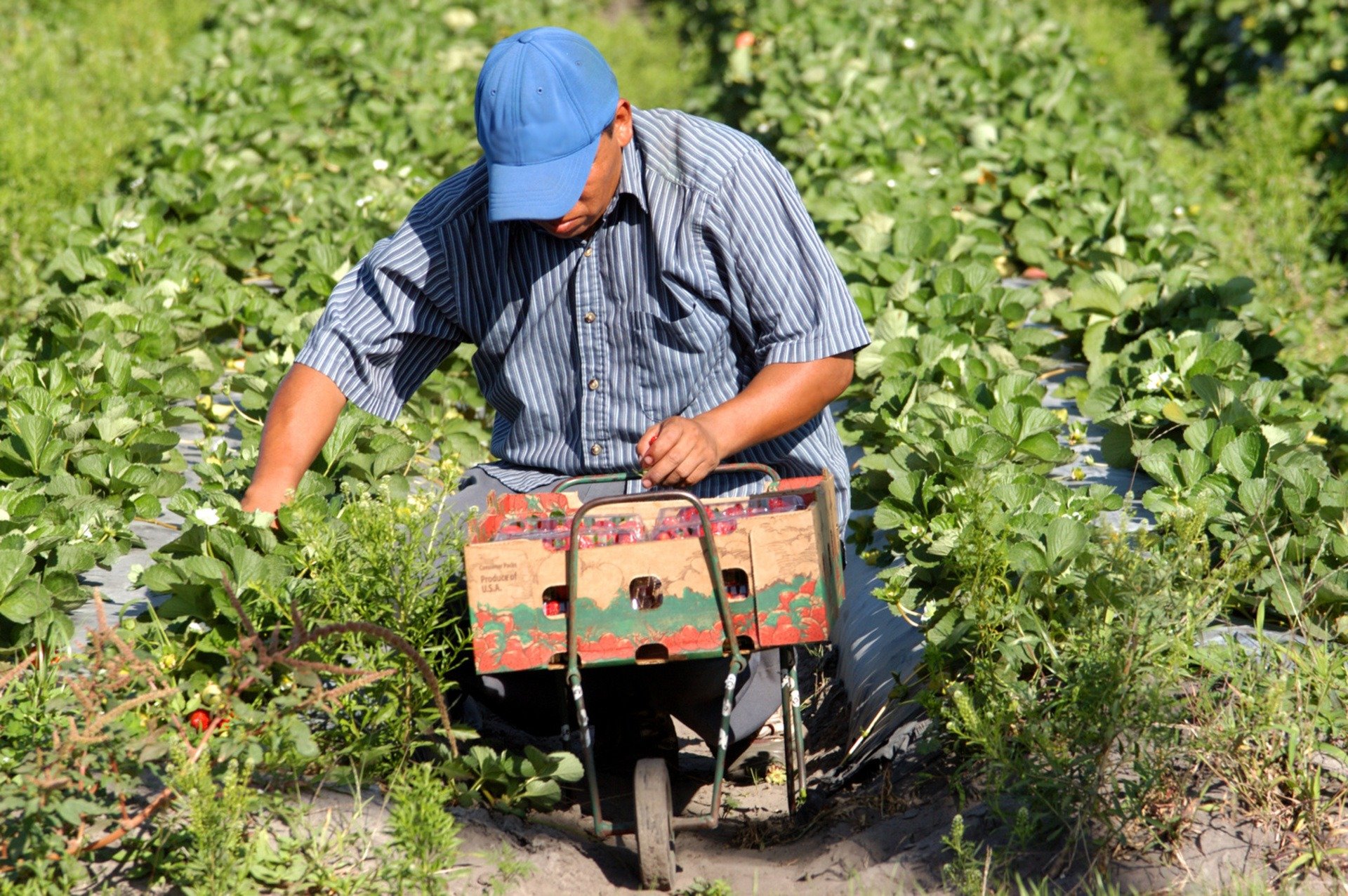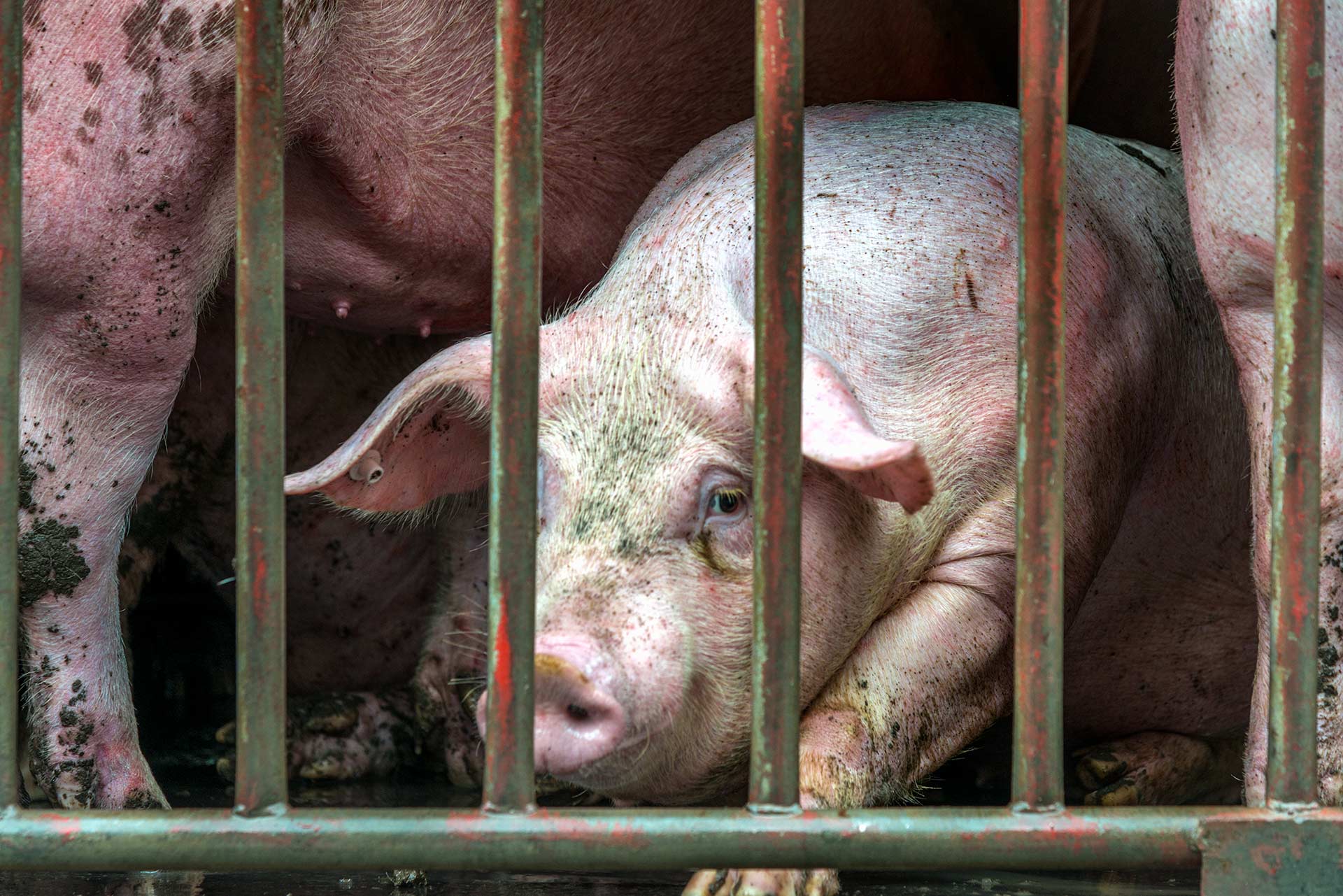The meat industry has come to be dominated by a handful of huge corporations that slaughter and process most of the country’s meat at large centralized facilities. The volume and speed of production demanded at meatpacking and slaughterhouses often make for dangerous and unsanitary conditions that can lead to worker injury and contaminated product. The U.S. Department of Agriculture oversees the industry, but a lack of funding and lax enforcement of existing regulations means that often the industry is left to regulate itself.
What Is Meatpacking?
Meatpacking refers to the process of turning livestock into meat, including slaughter, processing, packaging and distribution. These days, the top meatpacking companies do not just produce meat, they also control how the animals are raised long before slaughter: in the chicken industry, companies oversee the process from chick genetics through supermarket packaging; in the beef industry, cattle come under the control of the big meatpackers four to six months before slaughter.
The ownership of all parts of the supply chain is called vertical integration. It gives integrators – the companies who have integrated all the different parts under one umbrella – control over price and quality; and the economies of scale they have achieved have helped to drive down the consumer prices of meat. Vertical integration has also allowed the meat industry to become highly consolidated, controlled by just a few companies: As of 2019, the four largest companies in each sector controlled 85 percent of beef cattle slaughter, 67 percent of pork packing, and 54 percent of broiler chicken processing.4 Large-scale unionizing, along with the 1935 National Labor Relations Act, improved wages and working conditions at meatpacking plants; by the middle of the twentieth century, meatpacking jobs were considered skilled labor, and workers could expect to rise to the middle class. This period of opportunity didn’t last long, however, as companies began to move the packing facilities out of cities into rural areas, to be closer to the animal stock and to have more control over their workers. Transition to a production line, where workers performed the same task repeatedly, meant unskilled workers could be hired at lower wages. Consolidation began to rise again, such that today meatpacking is one of the most concentrated sectors of the economy; with consolidation, conditions at plants have worsened severely.
The Price Paid by Workers in Slaughterhouses
The meatpacking industry, as a 2015 report by Oxfam America on poultry workers put it, “churns out a lot of chicken, but it also churns through a lot of human beings.” Oxfam estimates that from every dollar spent on a McDonald’s Chicken McNugget, just two cents goes to compensate the processing labor. 6 7 The U.S. General Accounting Office (GAO) found in 2016 that while injury rates for meat and poultry processing workers have declined in recent years, they are (at 5.7 percent) still higher than in manufacturing, overall. 8
Injuries from the cutting equipment, from falls on slippery floors and from exposure to chemicals and pathogens are common. Musculoskeletal disorders — injuries to the nerves, tendons and muscles — are especially prevalent. For example, the incidence of carpal tunnel syndrome in poultry processing is six times higher than the national average.11
Food Safety
In 2021, USDA issued 47 recalls of contaminated meat products, including 12 million pounds that were contaminated by Listeria, Salmonella, Bacillus and various forms of E. coli.13 In 2014, Wolverine Packing Company recalled approximately 1.8 million pounds of ground beef products after 12 people were infected with an outbreak E. coli strains in four states. That same year, Tyson Foods recalled 33,840 pounds of mechanically separated chicken parts, some of which had infected nine people in a correctional facility in Tennessee with Salmonella. Baseline studies by the USDA’s Food Safety and Inspection Service found that 26.3 percent of raw chicken parts in the U.S. tested positive for Salmonella and 21.4 percent for Campylobacter, two harmful bacteria.14
12 million
The number of pounds of meat that was recalled in 2021 due to Listeria, Salmonella, Bacillus or E. Coli
Bacteria can enter the food supply if proper care is not taken in slaughter and processing. Fecal matter from animal intestines or animal hides can spread to tables, tools or to the meat itself. The high speeds of production lines in many processing plants, however, make it difficult for workers to take the necessary care to prevent contamination.
While rates of documented contamination are relatively low given the scale of total annual U.S. meat production (54.9 billion pounds red meat and 52.1 billion pounds chilled and frozen poultry), even one instance of death caused by bacteria in the food supply is too many.17 The HACCP system allows many inspection tasks to be carried out by the meat companies themselves, and actually reduces the involvement of USDA inspectors. 20
HACCP also impacts worker safety. A USDA rule, Modernization of Poultry Slaughter Inspection, finalized in 2014, had initially proposed an increase in production line speed from 140 to 175 birds per minute. The increase was rejected in the final rule, but there has been no subsequent rulemaking by the Occupational Safety and Health Administration (OSHA) to further protect meat or poultry workers. According to a Southern Poverty Law Center’s report, OSHA “has no set of mandatory guidelines tailored to protect poultry processing workers. Workers cannot bring a lawsuit to prevent hazardous working conditions or even to respond to an employer’s retaliation, if they complain about safety hazards or other abusive working conditions.”
Corporate Meatpacking Alternatives
Although consumer demand for local, sustainably-produced meats is growing, satisfying this demand is no easy task, in large part because decades of consolidation has wiped out the infrastructure needed to produce and market meat products from small farms. Small slaughter and processing operations have been closing across the country, because of industry consolidation, low profit margins, the complexities of federal regulation and the challenges of disposing of slaughter byproducts. Between 2000 and 2010, the number of slaughterhouses in the U.S. declined by 15 percent.
What You Can Do
- Find locally-raised and -slaughtered meat at your local farmers’ market.
- If you can, buy Animal Welfare Approved certified meat, which has high standards for slaughter.
- Learn more about food labels with our Food Label Guide.
Hide References
- “Packers and Stockyards Division Annual Report 2020.” USDA Agricultural Marketing Service, United States Department of Agriculture, Dec. 2021, https://www.ams.usda.gov/sites/default/files/media/PackersandStockyardsAnnualReport2020.pdf.
- Deese, Brian, et al. “Addressing Concentration in the Meat-Processing Industry to Lower Food Prices for American Families.” WH.gov, The White House, 15 Dec. 2021, https://www.whitehouse.gov/briefing-room/blog/2021/09/08/addressing-concentration-in-the-meat-processing-industry-to-lower-food-prices-for-american-families/.
- “Livestock Slaughter 2022 Summary.” USDA Economics, Statistics and Market Information System, United States Department of Agriculture, 19 Apr. 2023, https://usda.library.cornell.edu/concern/publications/r207tp32d.
- Food and Water Watch. “Why Antitrust Laws Matter for Agriculture and Food: Fact Sheet.” Food and Water Watch, March 2011. Retrieved January 17, 2017, from https://foodandwaterwatch.org/wp-content/uploads/2021/03/antitrust_laws_agriculture_fs_march_2011.pdf
- Oxfam America. “Lives on the Line: The Human Cost of Cheap Chicken.” Oxfam America, 2015. Retrieved January 17, 2017, from https://www.oxfamamerica.org/static/media/files/Lives_on_the_Line_Full_Report_Final.pdf
- Ibid.
- Fritzsche, Tom. “Unsafe at These Speeds.” Southern Poverty Law Center, February 28, 2013. Retrieved March 6, 2019, from https://www.splcenter.org/20130228/unsafe-these-speeds
- U.S. Government Accountability Office. “Workplace Safety and Health: Additional Data Needed to Address Continued Hazards in the Meat and Poultry Industry.” GAO-16-337, April 2016. Retrieved January 17, 2017, from https://www.gao.gov/assets/680/676796.pdf
- “Poultry Processing Workers Incur a High Rate of Nonfatal Workplace Injuries and Illnesses.” U.S. Bureau of Labor Statistics, 4 Oct. 2018, www.bls.gov/opub/ted/2018/poultry-processing-workers-incur-a-high-rate-of-nonfatal-workplace-injuries-and-illnesses.htm.
- Douglas, Leah. “Mapping Covid-19 Outbreaks in the Food System.” Food and Environment Reporting Network, 8 Sept. 2021, thefern.org/2020/04/mapping-covid-19-in-meat-and-food-processing-plants/c.
- Fritzsche, Tom. “Unsafe at These Speeds.” Southern Poverty Law Center, February 28, 2013. Retrieved March 6, 2019, from https://www.splcenter.org/20130228/unsafe-these-speeds
- “Summary of Recall Cases in Calendar Year 2021.” USDA Food Safety and Inspection Service, United States Department of Agriculture, 28 Jan. 2022, https://www.fsis.usda.gov/food-safety/recalls-public-health-alerts/annual-recall-summaries/summary-recall-cases-calendar-8.
- Painter, John A., et al. “Attribution of Foodborne Illnesses, Hospitalizations, and Deaths to Food Commodities by Using Outbreak Data, United States, 1998–2008.” Emerging Infectious Diseases, vol. 19, no. 3, Mar. 2013, pp. 407–415., https://doi.org/10.3201/eid1903.111866. Accessed 3 May 2023.
- Food Safety and Inspection Service. “The Nationwide Microbiological Baseline Data Collection Program: Raw Chicken Parts Survey.” USDA, 2012. Retrieved January 17, 2017, from https://www.fsis.usda.gov/wps/wcm/connect/a9837fc8-0109-4041-bd0c-729924a79201/Baseline_Data_Raw_Chicken_Parts.pdf?MOD=AJPERES
- “Meat Statistics Tables, Historical .” USDA Economic Research Service, United States Department of Agriculture, 27 Apr. 2023, https://www.ers.usda.gov/data-products/livestock-and-meat-domestic-data/.
- Consumer Federation of America. “The Promise and the Problems of HACCP: A Review of USDA’s Approach to Meat and Poultry Safety.” CFA, April 24, 2015. Retrieved March 6, 2019, from https://consumerfed.org/wp-content/uploads/2010/06/150424_CFA-HACCP_report.pdf
- Ibid.
- Frontline. “Modern Meat: What is HAACP?” Public Broadcasting Service, October 12, 2006. Retrieved March 6, 2019, from https://www.pbs.org/wgbh/pages/frontline/shows/meat/evaluating/haccp.html
- Consumer Federation of America. “The Promise and the Problems of HACCP: A Review of USDA’s Approach to Meat and Poultry Safety.” CFA, April 24, 2015. Retrieved March 6, 2019, from https://consumerfed.org/wp-content/uploads/2010/06/150424_CFA-HACCP_report.pdf
- Ibid.
- Food and Water Watch. “Meatpacker Concentration Harms Farmers, Workers and Consumers: Proposed USDA Livestock Rule Can Strengthen Rural Economies: Issue Brief.” Food and Water Watch (November 2011). Retrieved January 17, 2017, from https://foodandwaterwatch.org/wp-content/uploads/2021/03/meatpacker_concentration_ib_nov_2011.pdf


